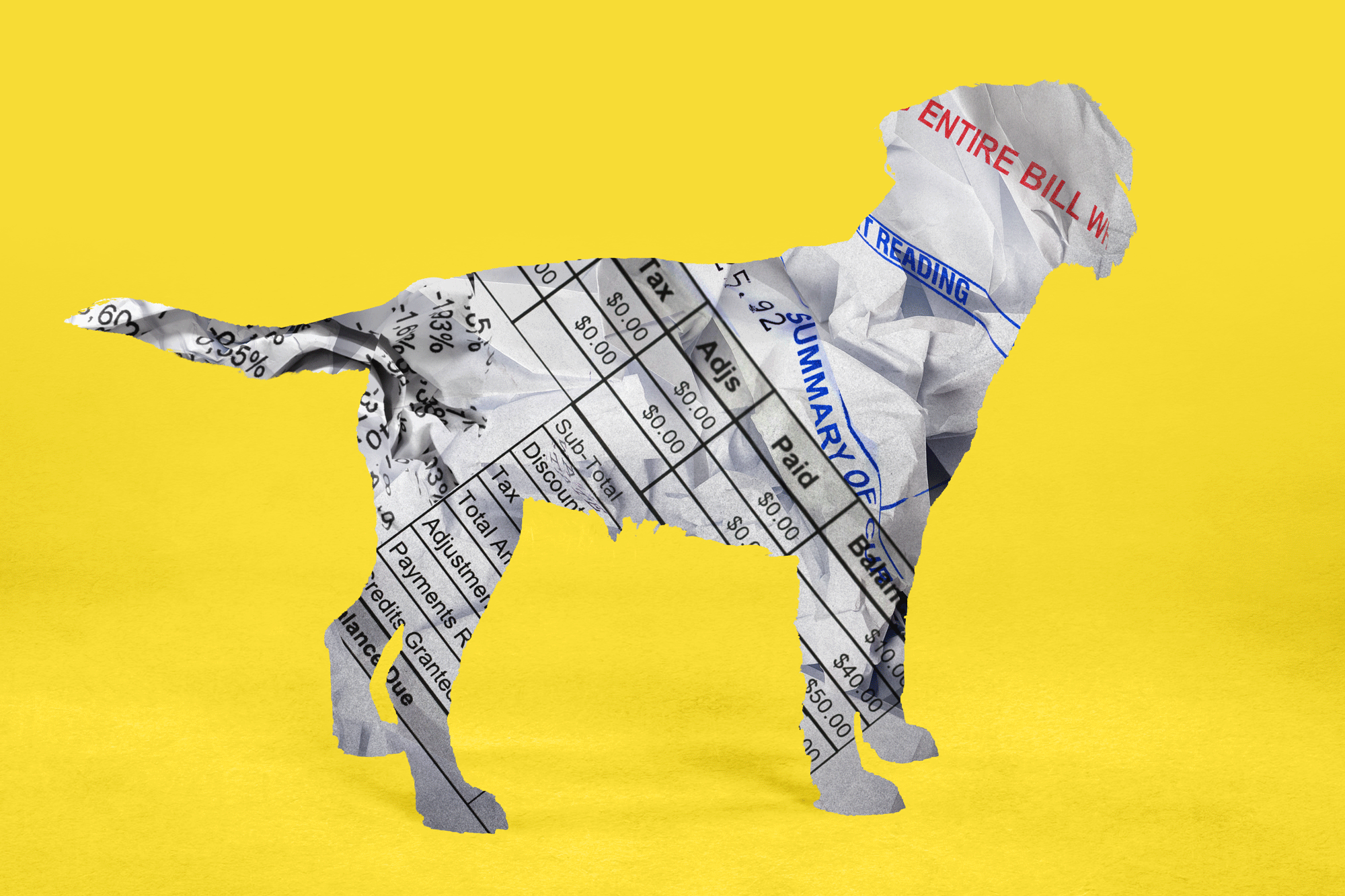Column: Medicare for pets — it’s not as crazy as you think
- Share via
Medicare for all. For pets.
I’ve been chewing on that idea since chatting with Stephanie Napoles, 32, who shared a recent experience involving her Cane Corso, Rockie.
Rockie was diagnosed with hip dysplasia after a minor accident. It’s a relatively common ailment among larger dogs (and Cane Corsos are big; Rockie, at 8 months, already weighs 90 pounds).
The basic issue with hip dysplasia is that the ball and socket of the hip joint stop fitting properly, causing the joint to deteriorate. Hip replacements costing thousands of dollars are often prescribed by vets.
Rockie is insured by a Bellevue, Wash., pet insurance company called Healthy Paws, which I wrote about last year after the firm denied coverage for a Pasadena pit bull’s cancer. Healthy Paws insisted the dog’s sickness was a preexisting condition.
It wasn’t. After I got involved, Healthy Paws acknowledged that the latest cancer was unrelated to an earlier tumor and agreed to cover all claims.
Rockie may not be as fortunate. Healthy Paws informed Napoles the other day that coverage for hip dysplasia will be provided only if a dog was insured prior to turning 6 and if no symptoms of hip dysplasia were detected over the ensuing 12 months.
“Since the signs and symptoms of Rockie’s hip dysplasia” surfaced before that 12-month window was up, the company said, “it is not eligible for coverage under the Healthy Paws policy.”
Napoles, who lives near Camp Pendleton (her husband, a Marine, is stationed there), said she pays $135 a month in premiums to cover two dogs.
“If you’re going to have loopholes for preexisting conditions, why offer insurance at all?” she asked.
A Healthy Paws spokeswoman declined to comment.
This situation is a bummer for both Napoles and Rockie, but at least the insurer is straightforward about its rules and spells out the circumstances that will exclude coverage for hip dysplasia.
Preexisting conditions for critters can be just as troublesome from an insurance point of view as preexisting conditions for people.
Yes, such conditions aremore expensive to cover. But, no, that doesn’t mean these are medical issues we can ignore.
That’s what got me thinking about a “Peticare for all” program — insurance that covers all pets, no questions asked.
“I would love it if we had socialized veterinary medicine,” said Dr. Peter Weinstein, executive director of the Southern California Veterinary Medical Assn., representing about 1,500 vets in Los Angeles and Orange counties.
“Can you imagine how difficult it is for vets to have to put an animal to sleep because the owner can’t afford treatment? We have to do that every day.”
With some careful planning, Weinstein said, Peticare for all “could very easily work.”
“California would be the place to try it because we have so many people and so many animals,” he said.
Insurance is the art of risk management, and the best way to do that is by spreading risk as widely as possible to provide the greatest amount of coverage at the lowest possible price.
Medicare for all — or any single-payer insurance plan — represents the most efficient way of providing health coverage for humans because it creates a nationwide risk pool of hundreds of millions of people, thus allowing for economies of scale unavailable to smaller plans.
It’s also the most cost-effective way of covering preexisting conditions, which otherwise can be too expensive to insure.
“Pet insurance excludes these conditions because otherwise people wait until their pet is sick to buy the insurance,” said Gerald Kominski, a professor of health policy and management at UCLA. “Making insurance mandatory is the best mechanism for keeping premiums low.”
But that’s where things get tricky.
About 2.4 million pets were insured in the United States and Canada as of last year, according to the North American Pet Health Insurance Assn.
That might sound like a lot, but it’s just a small fraction of the estimated 78 million dogs and 86 million cats in the U.S. alone. Clearly, most pet owners choose not to insure.
Monthly premiums for dogs average $47. For cats, $29.50.
So how do we create a significantly larger risk pool that brings those costs down?
“The big challenge is getting the owners of healthy pets to join,” said Priyanka Anand, an associate professor of health administration and policy at George Mason University.
California law requires that all dogs over the age of 4 months be vaccinated against rabies and licensed through the local animal care agency.
Many cities and counties, including Los Angeles, also require that cats be vaccinated for rabies and licensed.
How about if we insure dogs and cats as part of the licensing process? And so it doesn’t become cost-prohibitive, how about if we make different levels of coverage available?
I’ll leave it to others to come up with the details of such a proposal — the premiums, the copays, the deductibles. But what if, for a $25 annual charge during licensing, pets could be covered for routine shots and checkups?
What if, for $50 a year, pets could be covered for infections and minor injuries?
What if, for $100, pets could be covered, at least in part, for more serious medical issues — broken bones, disease, genetic disorders (including hip dysplasia)?
And, as with Medicare, pets couldn’t be turned down for a preexisting condition. A dog or cat gets ill, it gets treated — as long as it was enrolled in coverage while still a puppy or kitten.
The numbers now become more interesting. If every dog and cat owner paid $25 a year into a nationwide plan, we’re talking $4.1 billion. That’s about three times the current pet insurance premium total. At $100 annually, that’s $16.4 billion.
Americans spent about $18 billion on veterinary care last year, according to the American Pet Products Assn.
As with all insurance programs, the devil’s in the details. For example, should all critters be covered?
“Dogs and cats perhaps,” said Peter Hilsenrath, a healthcare economist at the University of the Pacific. “Birds and hamsters maybe. But what about fish or snakes?”
David J. Becker, an associate professor of healthcare organization and policy at the University of Alabama at Birmingham, said many pet owners may be reluctant to participate in a program intended to cover all animals, not just their own.
“I think there is far more support to take care of our fellow human beings than there is support for publicly financed health insurance coverage for other people’s pets,” he said.
Fair enough. That’s why, aside from potentially billions of dollars in licensing fees, I’m thinking funds also would have to come from the private sector.
Looking at you, Petco and PetSmart. And you, candy bar giant Mars, maker of Pedigree and Whiskas pet foods, owner of the VCA and Banfield pet-hospital chains. A universal pet insurancesystem also might seek grants from private foundations.
A 2017 paper on pet healthcare in the American Economic Review concluded that “many features of the American pet healthcare sector are, qualitatively, remarkably similar to those of the American human healthcare sector.”
“The two industries share a common feature: the need to make decisions and trade-offs with respect to medical spending that may potentially improve or extend life.”
That’s what insurance is intended to address, and that’s what a far-reaching government insurance program can do most effectively.
I asked Napoles if she’d sign up Rockie for Peticare for all.
“Oh my God, that would be amazing,” she replied. “I would happily pay $300 a month if I knew my dog would be covered regardless of any preexisting conditions.”
She’s probably not alone.
More to Read
Inside the business of entertainment
The Wide Shot brings you news, analysis and insights on everything from streaming wars to production — and what it all means for the future.
You may occasionally receive promotional content from the Los Angeles Times.











